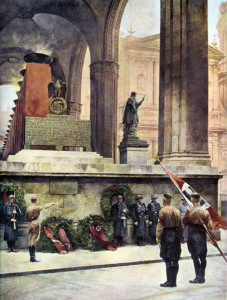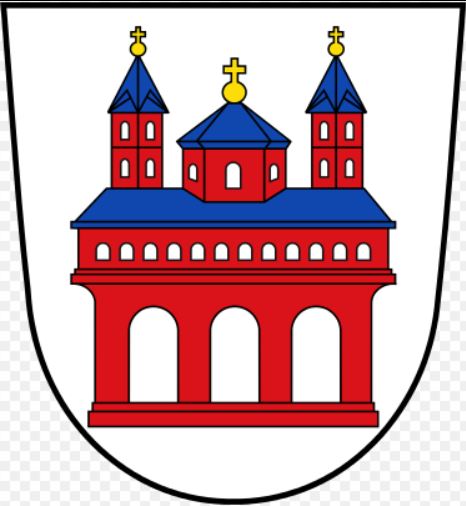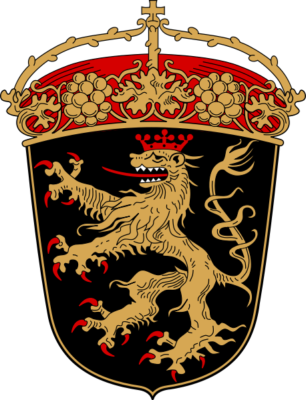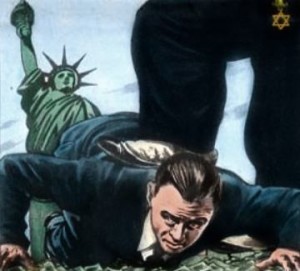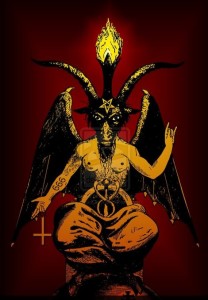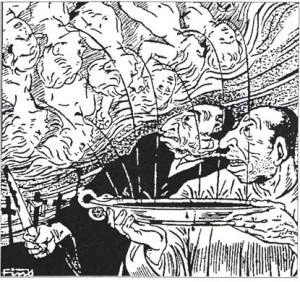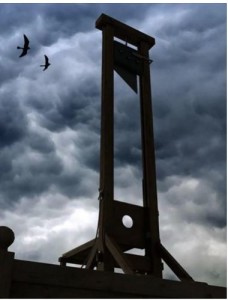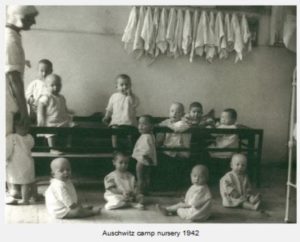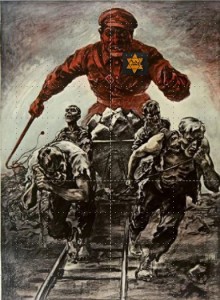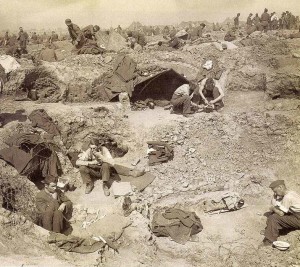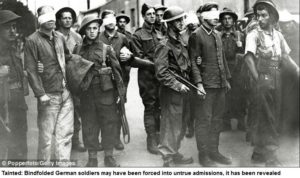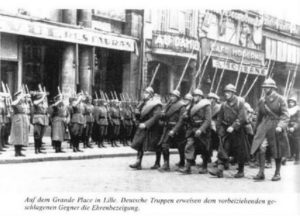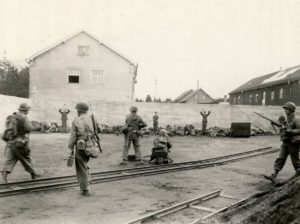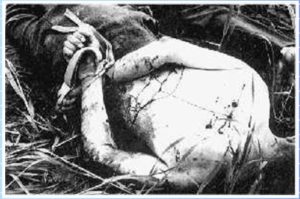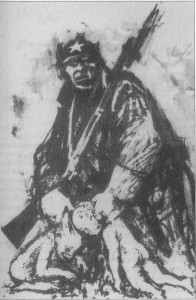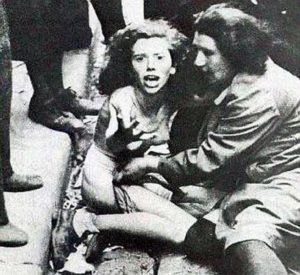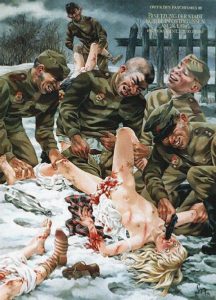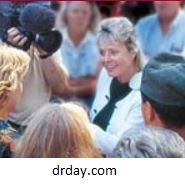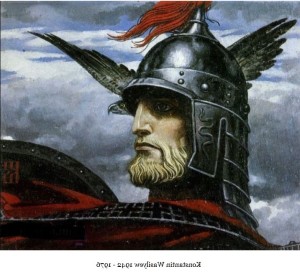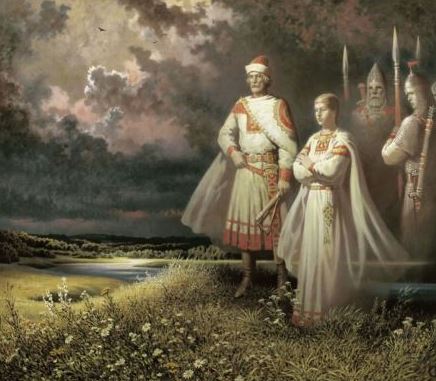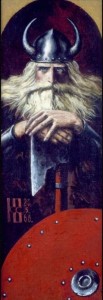HERE BE CANNIBALS
________________________________________
CANNIBALISM IN THE AFRICAN CONGO
Nearly all the tribes in the Congo Basin either are or have been cannibals; and among some of them the practice is on the increase. Races who until lately do not seem to have been cannibals, though situated in a country surrounded by cannibal races, have, from increased intercourse with their neighbours, learned to eat human flesh.
Soon after the Station of Equator was established, the residents discovered that a wholesale human traffic was being carried on by the natives of the district between this station and Lake M’Zumba. The captains of the steamers have often assured me that whenever they try to buy goats from the natives, slaves are demanded in exchange; the natives often come aboard with tusks of ivory with the intention of buying a slave, complaining that meat is now scarce in their neighbourhood.
There is not the slightest doubt in my mind that they prefer human flesh to any other. During all the time I lived among cannibal races I never came across a single case of their eating any kind of flesh raw; they invariably either boil, roast or smoke it. This custom of smoking flesh to make it keep would have been very useful to us, as we were often without meat for long periods. We could, however, never buy smoked meat in the markets, it being impossible to be sure that it was not human flesh.
The preference of different tribes for various parts of the human body is interesting. Some cut long steaks from the flesh of the thighs, legs or arms; others prefer the hands and feet; and though the great majority do not eat the head, I have come across more than one tribe which prefers this to any other part. Almost all use some part of the intestines on account of the fat they contain. [*Is this why Africans debowl nowadays their white victims?]
A young Basongo chief came to our Commandant while at dinner in his tent and asked for the loan of his knife, which, without thinking, the Commandant gave him. He immediately disappeared behind the tent and cut the throat of a little slave-girl belonging to him, and was in the act of cooking her when one of our soldiers saw him. This cannibal was immediately put in irons, but almost immediately after his liberation he was brought in by some of our soldiers who said he was eating children in and about our cantonment. He had a bag slung round his neck which, on examining it, we found contained an arm and leg of a young child.
A man with his eyes open has no difficulty in knowing, from the horrible remains he is obliged to pass on his way, what people have preceded him, on the road or battlefield – with this difference: that on a battlefield he will find those parts left to the jackals which the human wolves have not found to their taste; whereas on the road, by the smouldering camp fires, are the whitening bones, cracked and broken, which form the relics of these disgusting banquets. What struck me most, during my expeditions throughout the country, was the number of partially cut-up bodies I found. Some of them were minus the hands and feet, and some with steaks cut from the thighs or elsewhere; others had the entrails or head removed. Neither old nor young, women or children, are exempt from serving as food for their conquerors or neighbours.
Sidney Langford Hinde (former captain of the Congo Free State Force), The Fall of the Congo Arabs, Methuen, 1897
The whole wide country seemed to be given up to cannibalism, from the Mobangi (a major tributary of the Congo) to Stanley Falls, for six hundred miles on both sides of the main river, and the Mobangi as well. Often did the natives beg Grenfell to sell some of his steamer hands, especially his coast people; coming from the shore of the great salt sea, they must be very ‘sweet’ – salt is spoken of as sweet, in the same way as sugar. They offered two or three of their women for one of those coast men. They could not understand the objections raised to the practice. ‘You eat fowls and goats, and we eat men; why not? What is the difference?’ The son of Matabwiki, chief of Liboko, when asked whether he ever ate human flesh, said: ‘Ah! I wish that I could eat everybody on earth!’ Happily his stomach and arm were not equal to the carrying out of his fiendish will.
Fiendish? Yet there is something free and lovable in many of these wild men; splendid possibilities when the grace of God gets a hold of them. Bapulula, the brother of that ‘fiend,’ worked with us for two years – a fine, bright, intelligent fellow; we liked him very much…
They divided up their human booty and kept them, tied up and starving, until they were fortunate enough to catch some more and so make up a cargo worth taking to the Mobangi. When times were bad, these poor starving wretches might often be seen tied up, just kept alive with the minimum of food. A party would be made up and two or three canoes would be filled with these human cattle. They would paddle down the Lulongo, cross the main river when the wind was not blowing, make up the Mobangi and sell their freight in some of the towns for ivory. The purchasers would then feed up their starvelings until they were fat enough for the market, then butcher them and sell the meat in small joints. What was left over, if there was much on the market, would be dried on a rack over the fire, or spitted, and the end of the spit stuck in the ground by a slow fire, until it could be kept for weeks and sold at leisure.
Sometimes a section of the people would club together to buy a large piece of the body wholesale, to be retailed out again; or a family man would buy a whole leg to divide up between his wives, children and slaves. Dear little bright-eyed boys and girls grew up accustomed to these scenes from day to day. They ate their own morsels from time to time, in the haphazard way that they have, and carried the rest of their portion in their hands, on a skewer or in a leaf, lest anyone should steal and eat it. To this awful depth have these children of the Heavenly Father fallen! This is no worked-up picture, it is the daily life of thousands of people at the present time in Darkest Africa.
Rev. W. Holman Bentley (Baptist Missionary Society), Pioneering on the Congo, TRS, 1900 (2 vols.)
The Bambala, these missionaries found, regarded as special delicacies human flesh that had been buried for some days; also a large, thick, white beetle grub found in palm trees… and human blood boiled with manioc flour. The women of the tribe were forbidden to touch human flesh, but had found many ways of circumventing the tabu, and were particularly addicted to human flesh, extracted from graves and in an advanced state of decomposition.
Garry Hogg, Cannibalism and Human Sacrifice, p. 114
For various reasons, the custom was kept secret, and even members of the [Bagesu] tribe were not permitted to look on during the ceremony, which was performed by night. Yet the custom was known to all, and each family was aware of what was going on, though they never sought to watch their neighbours’ doings.
When a man died, the body was kept in the house until the evening, when the relatives who had been summoned gathered for the mourning. In some exceptional instances it took one or two days to bring the relatives together, but as a rule all was ready by the evening of the day of death, and at sunset the body was carried to the nearest waste ground and deposited there. At the same time, men of the clan hid themselves in different places round about and, as darkness deepened, they blew upon gourd horns, making a noise like the cry of jackals.
The villagers said that the jackals were coming to eat the dead, and the young people were warned not to go outside. When darkness set in, and it was felt to be safe to work without intrusion from inquisitive onlookers, a number of elderly women relatives of the dead man went to the place where the body lay, and cut it up, carrying back the pieces they wanted to the house of mourning, and leaving the remains to be devoured by wild animals.
For the next three, or sometimes four, days the relatives mourned in the house in which the death had taken place, and there they cooked and ate the flesh of the dead, destroying the bones by fire and leaving nothing. There was no ‘purification,’ or ‘shaving’ when this mourning was ended; sometimes an ox was killed for a feast when the heir was announced, but as a rule the people simply returned to their ordinary life without any ceremony. The widows, however, burned their grass girdles, and either went about naked or wore the small aprons used by unmarried girls.
John Roscoe, The Bagesu and Other Tribes of the Uganda Protectorate, The Royal Society, 1924
Innumerable acts of cannibalism have been reported from time to time by both Belgians and French, the most recent of which I have actual knowledge being the waylaying by a party of Azande of a Belgian Officer proceeding on leave from the Lado Enclave (now Western Mongolla); they tore him limb from limb and ate him raw. This occurred twelve years ago…
Basil Spence, in Sudan Notes and Records, vol. III, no. 4 (Dec. 1920)
Source:
http://www.heretical.com/cannibal/congo1.html
[*comment by germanvictims]

